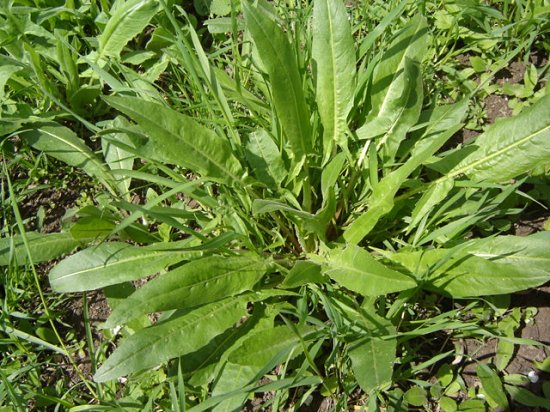Sorrel (Rumex acetosa) Gardening
[an error occurred while processing this directive]
Sorrel (Rumex acetosa) is a perennial herb in the family Polygonaceae, native to the British Isles, and can be found in most of Europe, temperate Asia, North America, and Greenland. It is also known as Garden sorrel, Common sorrel, spinach dock, and narrow-leaved dock. Sorrel is cultivated as a garden herb and leaf vegetable. It can be found growing in grassland, meadows, along the streams, coastal dunes, cliffs, and in open places in woodland.
Sorrel, 60 cm tall and 30 cm wide, is a slender plant, with deep roots. It has edible, oblong leaves and juicy stems. The leaves, 7-15 cm long, have very long petioles, and are slightly arrow-shaped at the base. In summer, Sorrel produces whorled spikes of reddish-green flowers which gradually change to purplish. The plant is dioecious, with separate male and female plants. The flowers are wind-pollinated, and is noted for attracting wildlife. Male and female plant must be grown if seed is required. The seeds are shiny and brown in color.
Sorrel's leaves can be pureed and make into soups and sauces, or use fresh in salads. The flavor is said to be lemon-like or similar to that of kiwifruit. The sharp taste of the plant is due to oxalic acid, a type of poison, which is harmless if consume in small quantities. The leaves should not be eaten in large amount since the oxalic acid can lock-up other nutrients in the food, especially calcium, thus causing mineral deficiency. People with gout, bladder stones, kidney stones, rheumatism, arthritis, or hyperacidity should exercise caution when including this plant in their diet, as it can aggravate their condition.
Sorrel is hardy and can be grown in most soils, but prefers sunny position, moist, well-drained, and moderately fertile soil. The plant stop producing leaves when it flowers in summer, regrowing after the seeds has set. Sorrel usually dies down in winter. Cutting down the flowering stem will encourage new growth of fresh young leaves. The larvae of several species of Lepidoptera (butterflies and moths), including the blood-vein moth, feed on the leaves of sorrel.
Propagation is by seed and division of roots. The young leaves can be harvested within 8 weeks from sowing.

Sorrel (Rumex acetosa)
Author: Christian Hummert (Creative Commons Attribution ShareAlike 2.5 Generic)
|

